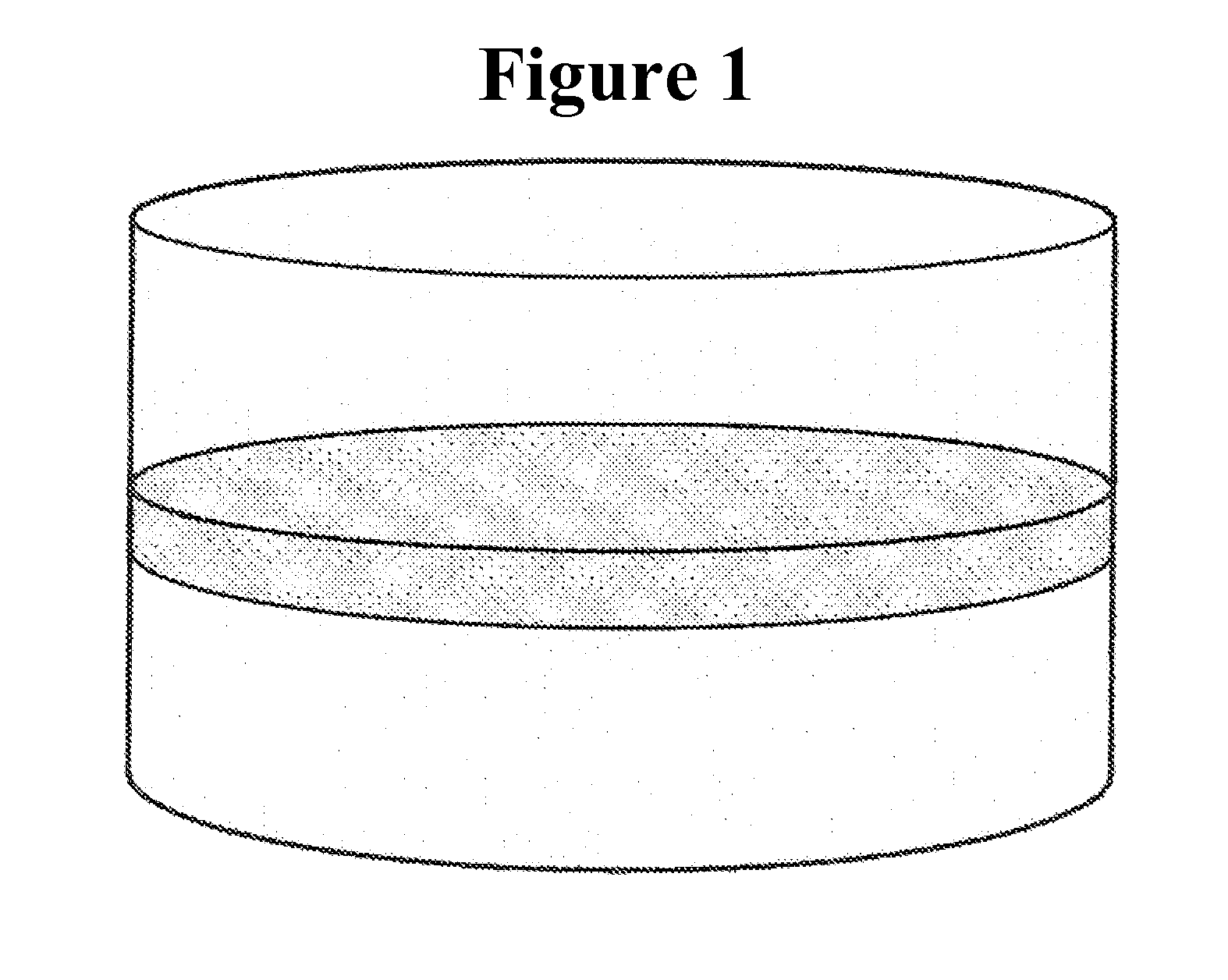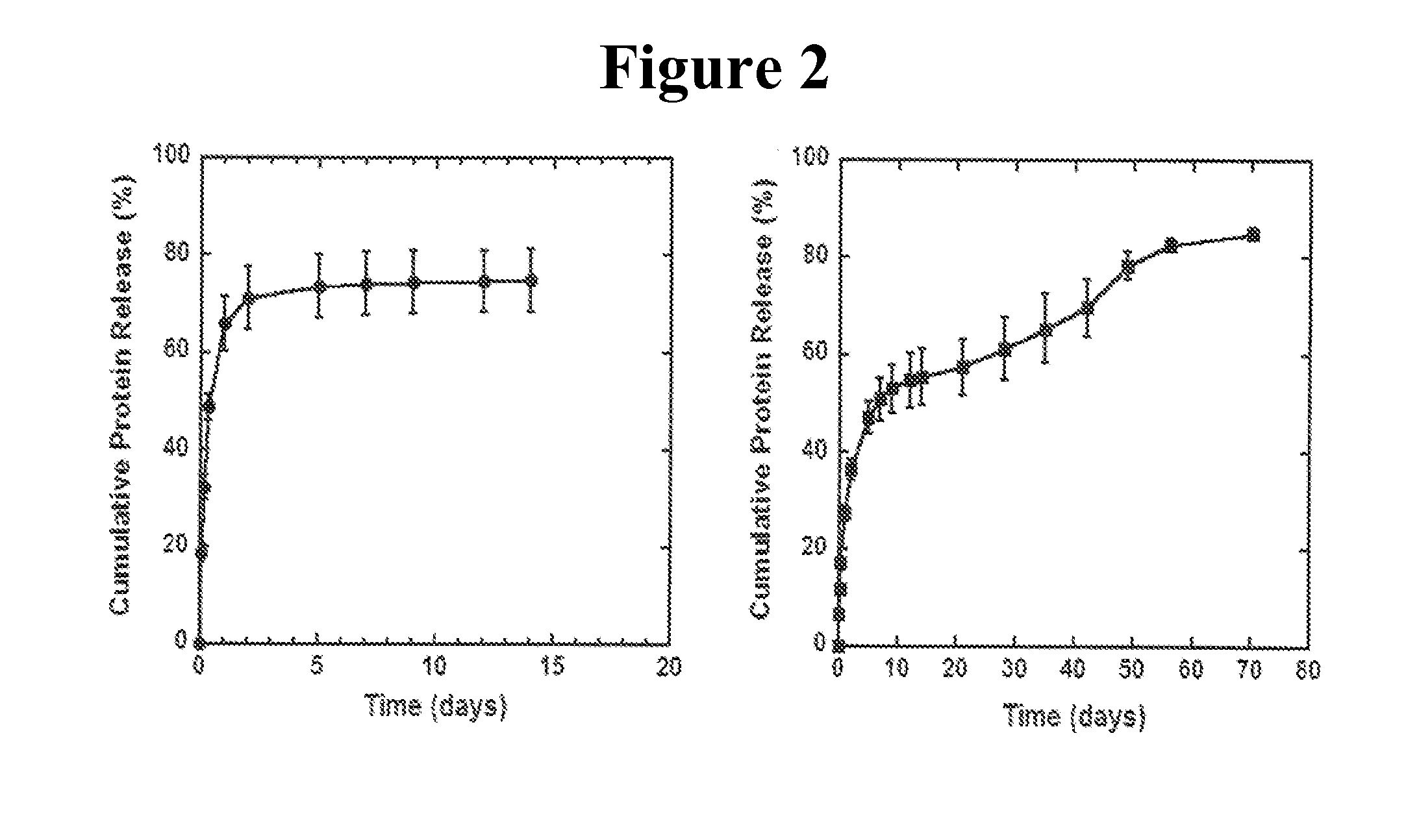Delivery Scaffolds and Related Methods of Use
a technology of microporous scaffolds and grafts, applied in the field of delivery systems, can solve the problems of clinical islet transplantation, rejection risk, and failure to achieve the effect of maximizing graft function and enhancing the function of transplanted islets
- Summary
- Abstract
- Description
- Claims
- Application Information
AI Technical Summary
Benefits of technology
Problems solved by technology
Method used
Image
Examples
example 1
Materials and Methods
Fabrication of Microporous Scaffolds
[0043]PLG microspheres were made as previously described (Jang J H, Shea L D. Controllable delivery of non-viral DNA from porous scaffolds. J Control Release 2003; 86 (1): 157) using a single emulsion / solvent evaporation process and used as building blocks for scaffold fabrication. PLG (75:25 molar ratio of D,L-lactide to glycolide, i.v.=0.6-0.8 dL / g) (Alkermes, Cincinnati, Ohio) was dissolved in methylene chloride to make a 2% (w / v) solution. This solution was emulsified in an aqueous 1% (w / v) poly(vinyl alcohol) (PVA, 88% hydrolyzed, average MW 22,000) (Acros Organics, Fair Lawn, N.J.) solution by homogenization at 7,000 rpm for 45 seconds. This homogenized solution was diluted in deionized (DI) water and stirred for 3 hours at room temperature to evaporate the organic solvent. Microspheres were collected by centrifugation (4,000 rpm for 10 minutes), washed three times with DI water to remove residual PVA, lyophilized to for...
example ii
Materials and Methods
Fabrication of DNA-Loaded Scaffolds
[0068]DNA-loaded scaffolds were fabricated using a previously described gas foaming / particulate leaching process (Mooney, D. J., Baldwin, D. F., Suh, N. P., Vacanti, J. P. & Langer, R. Novel approach to fabricate porous sponges of poly(D,L-lactic-co-glycolic acid) without the use of organic solvents. Biomaterials 17, 1417-1422 (1996); Harris, L. D., Kim, B. S. & Mooney, D. J. Open pore biodegradable matrices formed with gas foaming. J Biomed Mater Res 42, 396-402 (1998)), although the new layered scaffold design was implemented. PLG (75% D,L lactide / 25% glycolide, i.v.=0 76 dl / g) was dissolved in dichloromethane to make either a 2% (w / w) or 6% (w / w) solution, which was then emulsified in 1% poly(vinyl alcohol) to create microspheres The scaffold outer layers were constructed by mixing 1.5 mg of 6% PLG microspheres with 50 mg of NaCl (250-425 μm), and then compressing the mixture in a 5 mm KBr die at 1500 psi using a Carver pres...
PUM
| Property | Measurement | Unit |
|---|---|---|
| period of time | aaaaa | aaaaa |
| period of time | aaaaa | aaaaa |
| period of time | aaaaa | aaaaa |
Abstract
Description
Claims
Application Information
 Login to View More
Login to View More - R&D
- Intellectual Property
- Life Sciences
- Materials
- Tech Scout
- Unparalleled Data Quality
- Higher Quality Content
- 60% Fewer Hallucinations
Browse by: Latest US Patents, China's latest patents, Technical Efficacy Thesaurus, Application Domain, Technology Topic, Popular Technical Reports.
© 2025 PatSnap. All rights reserved.Legal|Privacy policy|Modern Slavery Act Transparency Statement|Sitemap|About US| Contact US: help@patsnap.com



